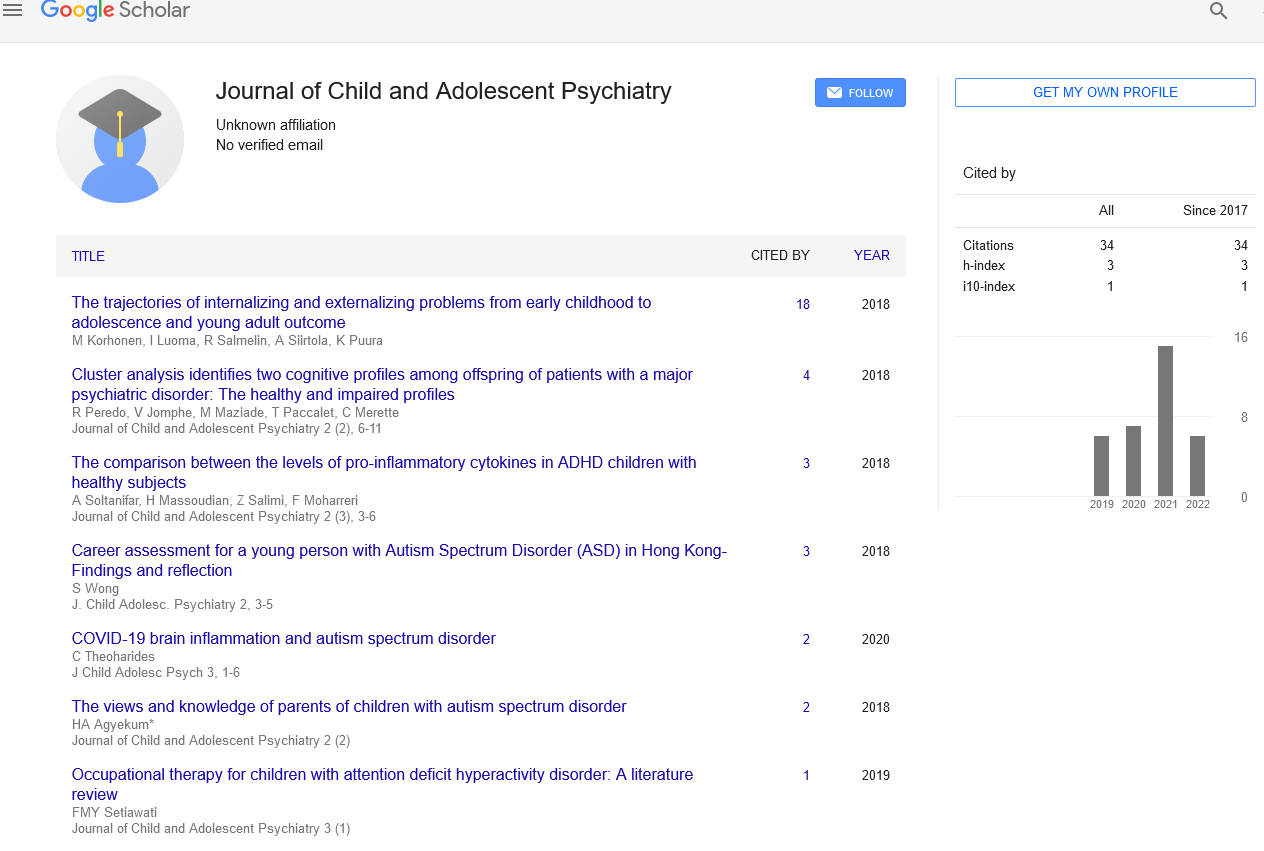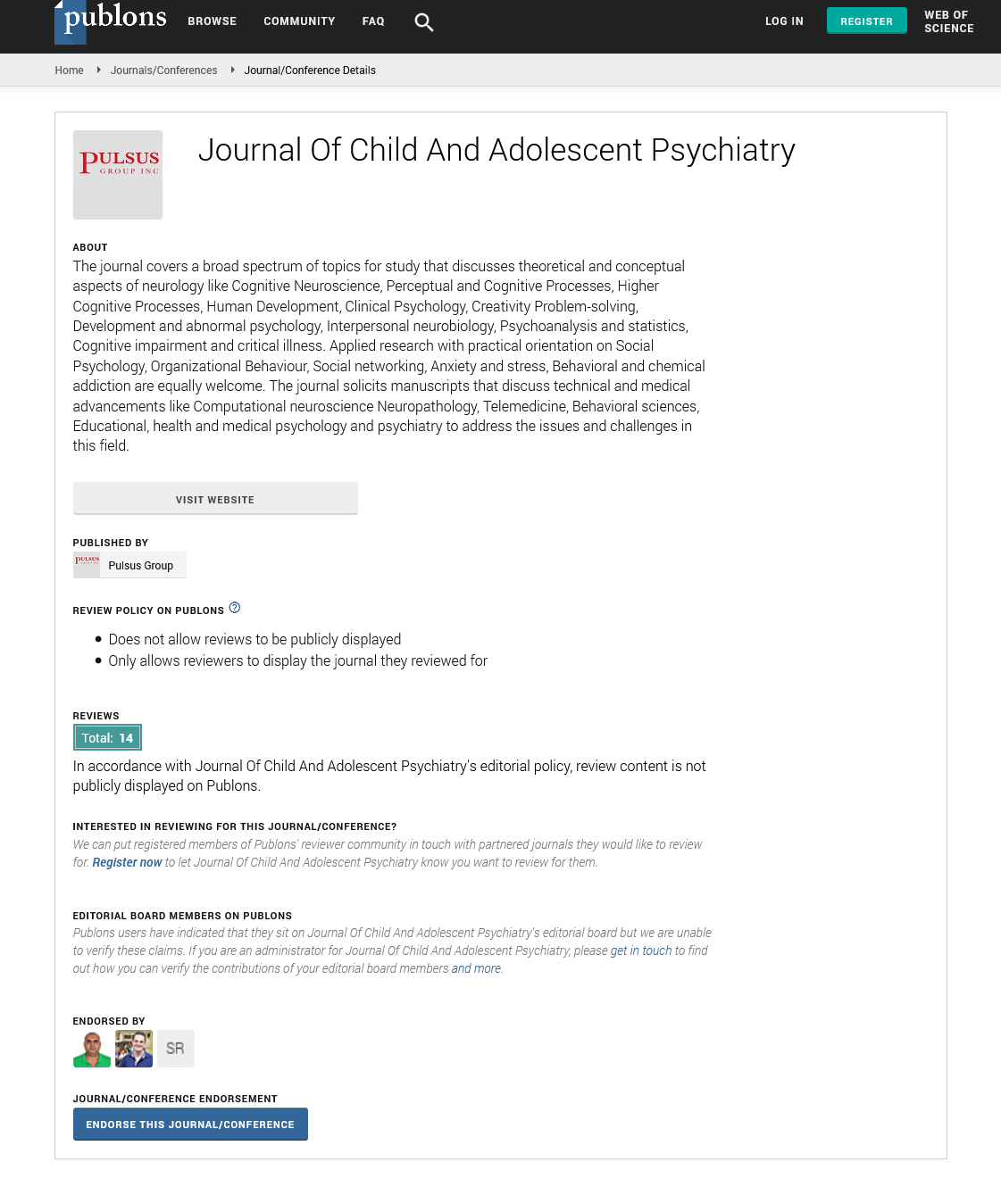The problem of prolongation in adolescence
Received: 07-Dec-2021 Accepted Date: Dec 21, 2021; Published: 28-Dec-2021
Citation: Xu KJ,The problem of prolongation in adolescence.Child Adolesc Psych .2021;5(5);1.
This open-access article is distributed under the terms of the Creative Commons Attribution Non-Commercial License (CC BY-NC) (http://creativecommons.org/licenses/by-nc/4.0/), which permits reuse, distribution and reproduction of the article, provided that the original work is properly cited and the reuse is restricted to noncommercial purposes. For commercial reuse, contact reprints@pulsus.com
Description
Adolescence is an issue that crosses across time and geography in human societies. Some demarcations differ by society, such as age, ritual, and so on. As a result, the chronological inquiry isn't always answered. The term's etymological root is adolescere, which means "to grow." Only societies with a period of time between childhood and the transfer of social responsibilities have adolescence. Initiation rites are tied to a significant shift in a young person's position and sense of self. There is a transformation process in place that ensures social transmission and collective consensus.
The existence of individuals and groups is intricately connected. The rite includes circumcision, perforation, scraping, waxing, tattooing, excoriation, burns, and other forms of corporal inscription. According to this, the framework for a civilization to maintain such ceremonies is conveyed through its connection with communal bonds, as the individual concept cannot exist. In some cultures, adolescence is not universally recognized. It emerged from a shift in affectivity among families in bourgeois societies in the 18th century.
Another important aspect of puberty is the development of a clear contrast between male and female personalities. Auto-erotic sexual activity is very similar in both sexes, and adolescence is a critical time for the subject to establish his gender identity. The prominence of the genital zones triggers identification with the male or female field. In addition to defining the new and final stage of sexual desire development, puberty promotes the subject's detachment from parental control (genital phase). In order to initiate the interaction, the person must transcend the incestuous primordial daydream's object-choice, yet the concentration on the incestuous object has implications. The inevitable unsatisfying interaction with the reality of sexuality that comes with puberty is the inevitable unsatisfying contact with the reality of sexuality that comes with youth. When it comes to the intended aim, the promise of phallic jouissance as a youngster gives way to disappointment, causing the subject to feel annoyed.
This procedure has nothing to do with the maturation of the biological body or the chronological growth of the individual.
pubescent body undergoes changes, but the important psychological transformation transcends any physical-chemical, hormonal, or age concern. Adolescence is a period when a variety of puberty responses develops. He discusses the differences between puberty and adolescence in considerable depth. When the non-relationship emerges to the individual, the first reflects the emergence of the genuine characteristic of sexuality.
Adolescence, on the other hand, is the subject's likely symptomatic response. Both the clinic and the social link are affected by modernity. The new ways of connecting civilization with the physical, symbolic, and imaginative registers change how an adolescent lives. Starting with puberty, psychoanalysis might claim that the yearning for a new articulation between enjoyment and the body is a constant of adolescence. Thinking about adolescence via the lens of prolonging and consumption broadens our scope of inquiry beyond the age issue.
Adolescence is a subjective inscription that occurs during the transition from childhood to adulthood and is linked to a symptomatic, phantasmatic, and recognizable condition. Thinking of adolescence as a unique period of decision-making teaches us that every adult bears the imprint of that period, or is estranged in an indecisive crossover in which, while being "adult," some aspects of the teenage stance are preserved indefinitely. What are the repercussions of legislation that sets an age restriction for adolescents? On the one hand, it ensures that everyone passes through adolescence, which also implies that everyone must leave it: the person is legally "Expelled" from adolescence. The legislation, on the other hand, does not ensure the psychic transition effect of this phase in terms of updating object choices and the location of symptoms and fancies. On the contrary, the chronological delimitation can even perplex the person over his or her puberty journey. There is a prolonging of adolescence due to the lack of parental countenances: the subject is often encouraged to adopt a method of enjoyment that avoids sexual concerns, such as drug addiction, anorexia, and so on. Adolescence becomes a hazier period in which the subject avoids making decisions, resulting in a more intense relationship between adolescence and the world of consuming.






